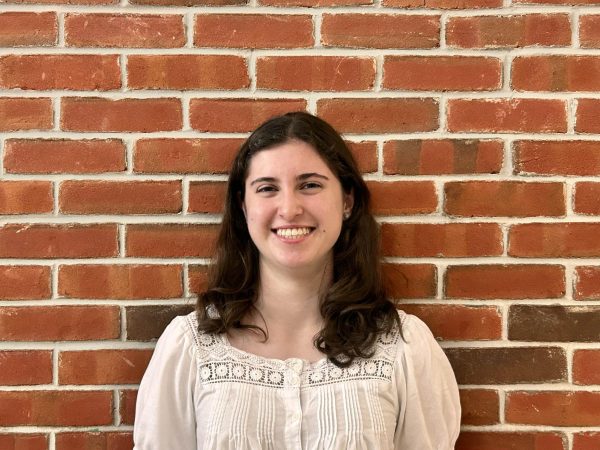The scoop on the 504 plan

The purpose of 504 plans is to allow students with disabilities to have an equal opportunity to participate services, programs and activities alongside their peers.
May 31, 2022
At RM, most students have seen a peer stay after a test to utilize their extended time or use a flash pass to go to the counselor.
A 504 plan is a legal document that prevents disabled students from being given unequal education opportunities. It is a part of the Rehabilitation Act passed by Congress in 1973.
“It’s designed for students with disabilities to be able to access the curriculum at the same rate as their peers, meaning that their disability is not getting in the way of them being able to take the same classes and do just as well,” counselor Julie Colatrella said.
504 plans give students accommodations to help them be successful academically. They are highly personalized based on the individual student’s disabilities and needs in the classroom. There is a wide range of disabilities that can make a student eligible for a 504 plan. Some of the most common are ADHD, anxiety, depression, and any temporary or permanent physical disability.
504 plans work by looking at the life functions that are undermined by a particular disability. Accommodations are then given based on the impaired life functions.
There is also a varied list of accommodations that can be used to help with particular disabilities. For example, a student with a broken leg may be given a temporary 504 plan that allows them to leave classes five minutes early and to use the school’s elevators. Students with diabetes are often allowed to have their food with them while taking a test.
Academically, some of the most common accommodations are receiving teacher notes or lesson outlines, and extended time on tests. Most students with extended time are given 150% of the original time allocated for the assessment. Students may also receive accommodations that allow them to sit near the teacher or use a calculator on non-calculator math tests.
All of these accommodations are assigned to a specific student based on their impaired life functions. “One of the functions of my life is concentrating… I have trouble processing information especially [when it’s] given to me auditorily… so being able to get teacher notes really helps for that,” sophomore Grace Volchok said.
The process of getting a 504 plan usually begins when teachers realize a particular student is struggling in classes. “My first step would be to talk to the students first to see what they are feeling, if they do feel like they want a little bit of extra support,” math teacher Lynly Lovelace said.
The process can also begin when the students get diagnosed with a disability that might show up in school. “There had been some problems in school, especially with getting assignments in. And I had recently gotten diagnosed with ADHD, and I guess anxiety by then as well,” Volchok said.
At this point, the issues are brought up to the student’s counselor, who works to determine if the student is eligible for a 504 plan. To be eligible, the students must show documentation of a disability, most often in the form of a diagnosis from a doctor or therapist.
Next, it must be proved that the student’s disability affects their learning. This information comes from the student’s teachers. Finally, there is a meeting between the student, their parents, their counselor, their administrator, some of their teachers, and the school psychologist to decide on eligibility.
If the student is found eligible, the group decides upon which accommodations will be included in the student’s 504 plan. “They all just sat down and were like, ‘Okay, what do we think would be helpful to have for Grace in the classroom?’ And that was based on information from teachers, and then also just general information about stuff that has been proven helpful for ADHD,” Volchok said.
Every year, the student’s accommodations get reevaluated. The student, teachers, and counselor analyze each accommodation for if and how it is being used, and whether or not it is helping. If the accommodation is not being used or is unhelpful, it is removed from the 504 plan. The student and teachers can also propose new accommodations that might be beneficial, which are then added to the plan.
Once a 504 plan is in place, the student’s teachers are given a copy of it, and the accommodations get implemented in the classroom. Most accommodations are student-initiated, meaning the student must tell the teacher that they would like to use extended time on a particular test or request a copy of the notes.
“While it would be ideal that the teachers kind of implement these for you, the reality of the situation is that they have hundreds of students and many of them have 504s,” Ms. Colatrella said. “Usually it does fall on the student to advocate for themselves.”
Teachers are generally very accommodating to students with 504 plans, granting the accommodations after the student advocates for them. It is up to individual teachers to figure out how they will ensure their students receive equal access to the lessons. “A lot of my students with 504s have an accommodation for the outline of the notes. So instead of printing them and making it obvious who I’m handing it out to, I just post my notes on Canvas for everyone,” Ms. Lovelace said. “That way it’s not singling out certain students.”
504 plans are incredibly helpful to the students who have them. “The extended time helps with a couple different things. If I’m having trouble focusing on or having a lot of anxiety all of that will slow me down,” Volchok said. “I do know if I wasn’t getting extended time on these tests, I would not be finishing them.” These plans allow the students to access learning at the same rate as their peers, ensuring that no one gets left behind.


